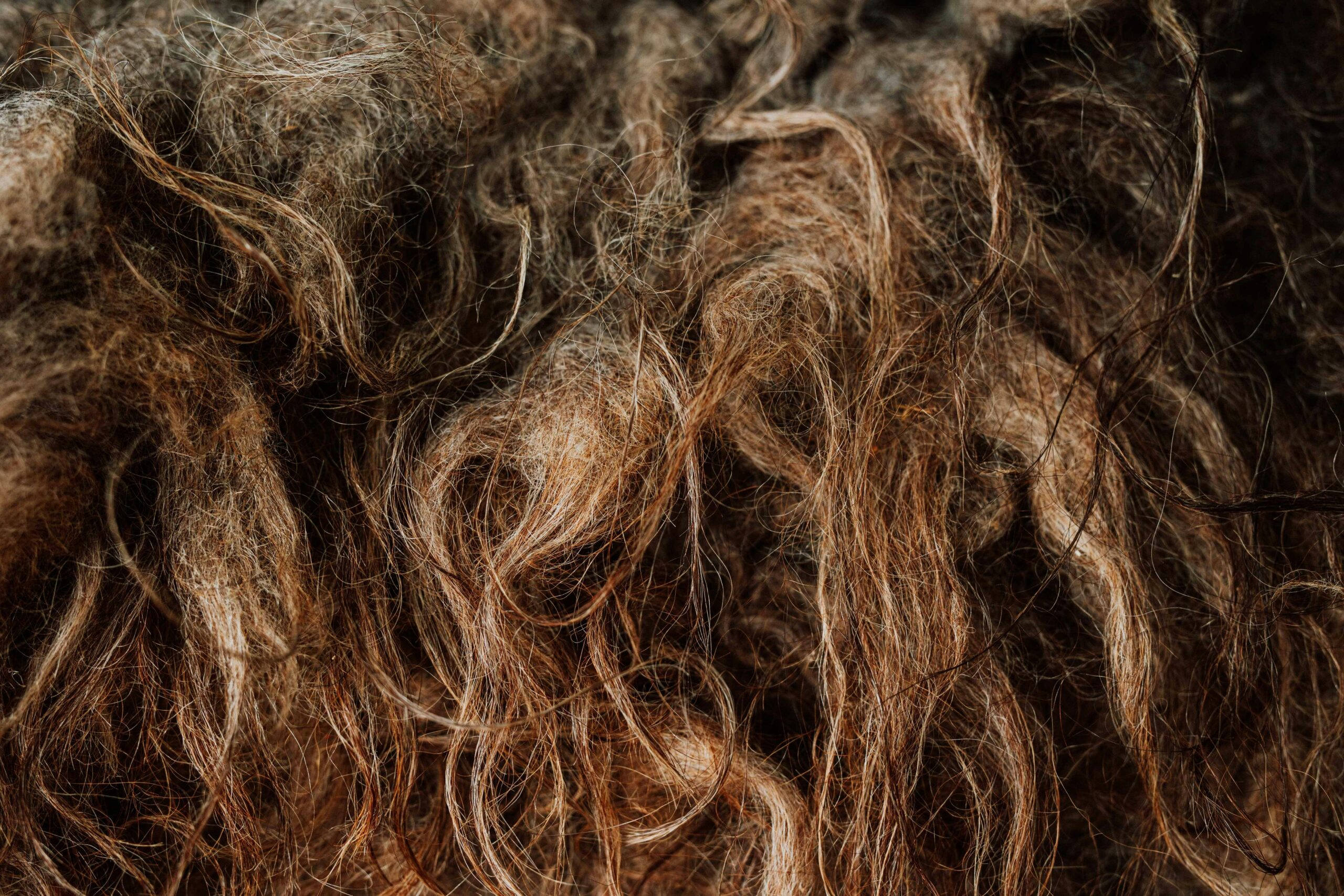Your hair has been through the wringer with all that heat styling, and now it’s crying out for help. Don’t worry – we’ve all been there, staring at our reflection, wondering if our hair will ever bounce back from that flat iron addiction. The good news? Heat damaged hair isn’t a lost cause, and with the right approach, you can nurse those strands back to health.
Heat damage happens when excessive temperatures break down your hair’s protein structure and strip away its protective layers. While some damage might be permanent, there’s plenty you can do to restore strength, shine, and manageability to your locks. Let’s dive into the science-backed methods that actually work.
Understanding the Science Behind Heat Damage
When you blast your hair with temperatures above 300°F, you’re essentially cooking the proteins that give your hair its structure1. Your hair consists of multiple layers, with the outermost cuticle acting like protective armor. This cuticle contains something called the f-layer, which is crucial for maintaining moisture and preventing frizz2.
Excessive heat strips away this f-layer, causing the cuticle to lift and making your hair vulnerable to moisture loss and external damage2. If the heat exposure is extreme enough, it can harm the cortex – the innermost part of your hair – leading to weakened strands that break easily.
What happens at the molecular level:
- Heat breaks protein bonds in keratin (your hair’s main structural protein)
- The cuticle becomes damaged and lifts away from the hair shaft
- Moisture escapes through the compromised cuticle
- Hair loses its ability to maintain a healthy moisture balance
This is why heat damaged hair often feels dry, looks dull, and breaks easily. Understanding this process helps you choose the right repair treatments for damaged hair that target these specific issues.
How to Identify Heat Damage in Your Hair
Before jumping into repair mode, you need to assess the extent of the damage. Heat damage presents itself in several telltale ways:
Mild Heat Damage Signs:
- Hair feels slightly rougher than usual
- Colors appear more faded than normal
- Slight increase in tangling
- Hair takes longer to air dry
Moderate Heat Damage Indicators:
- Noticeable dryness and brittleness
- Increased breakage when brushing
- Hair lacks its natural shine
- Difficulty holding styles
Severe Heat Damage Symptoms:
- Hair feels straw-like or gummy when wet
- Significant breakage and split ends
- Hair stretches excessively when wet and doesn’t bounce back
- Extreme dullness and lack of elasticity
The severity of your damage will determine which heat damaged hair treatment approach you should take.
Professional vs DIY Repair Methods
Professional Treatments
Olaplex and Bond-Building Treatments
Professional bond-building treatments like Olaplex work at the molecular level to rebuild broken protein bonds3. These treatments can make hair up to 8 times stronger and more resistant to future damage1. The process involves applying a series of products that penetrate the hair shaft and reconnect broken disulfide bonds.
Keratin Treatments
Professional keratin treatments help reconstruct your hair’s structure by infusing it with proteins4. These treatments can eliminate frizz, restore shine, and make hair more manageable for several months.
Deep Conditioning Services
Salon-grade deep conditioning treatments use concentrated ingredients that penetrate deeper than at-home options. These treatments often combine proteins, moisture, and protective ingredients for comprehensive repair.
DIY Repair Methods
Protein Treatments at Home
You can create effective protein treatments for damaged hair using ingredients like eggs, yogurt, or specialized protein masks. These treatments help fill in gaps in the hair shaft and temporarily strengthen weakened strands.
Deep Conditioning Masks
Regular deep conditioning for damaged hair is essential for restoring moisture balance5. Look for masks containing ingredients like shea butter, coconut oil, or ceramides that can penetrate the hair shaft.
Step-by-Step Recovery Plan for Heat Damaged Hair
Phase 1: Damage Control (Weeks 1-2)
Stop the Heat Immediately
The first rule of how to fix heat damaged hair is to give your styling tools a break5. Put away the flat irons, curling wands, and blow dryers for at least two weeks. This prevents further damage while you focus on repair.
Gentle Cleansing Routine
Switch to a sulfate-free shampoo that won’t strip your hair of its remaining natural oils54. Sulfates can worsen heat damage by removing the protective oils your hair desperately needs.
Trim Split Ends
Get a professional trim to remove the most damaged portions of your hair14. This prevents split ends from traveling up the hair shaft and causing more breakage.
Phase 2: Intensive Repair (Weeks 3-6)
Weekly Protein Treatments
Incorporate protein treatments for damaged hair once a week. Look for products containing peptides and amino acids, which are small enough to penetrate the hair shaft and provide reparative benefits1.
Bi-Weekly Deep Conditioning
Use intensive conditioning treatments twice a week during this phase4. Focus on products that contain keratin, natural oils, and moisturizing ingredients that can help restore your hair’s flexibility and strength.
Protective Styling
Embrace styles that don’t require heat or tension. Try braid-outs, twist-outs, or protective updos that keep your ends tucked away5.
Phase 3: Maintenance and Prevention (Week 7+)
Gradual Heat Reintroduction
If you must use heat, always apply a heat protectant first and keep temperatures below 300°F1. Ensure your hair is completely dry before using any hot tools.
Regular Maintenance Treatments
Continue with weekly deep conditioning and monthly protein treatments to maintain your hair’s improved condition.
Best Products and Ingredients for Heat Damage Repair
Key Ingredients to Look For
Peptides and Amino Acids
These small molecules can penetrate deep into the hair shaft to provide reparative benefits1. They help rebuild damaged protein structures and improve hair strength.
Keratin and Protein Complexes
Look for products containing hydrolyzed keratin or protein complexes that can fill in gaps in damaged hair cuticles4.
Natural Oils (Used Strategically)
While oils can provide moisture and nutrients, choose them wisely1. Lightweight oils like argan or jojoba work better than heavy oils that might weigh down damaged hair.
Ceramides and Lipids
These ingredients help repair the hair’s protective barrier and improve moisture retention.
Budget-Friendly Product Recommendations
DIY Deep Conditioning Mask
Mix 2 tablespoons of coconut oil, 1 egg yolk, and 1 tablespoon of honey for a protein-rich treatment that costs pennies to make6.
Homemade Protein Treatment
Blend 1 egg white with 2 tablespoons of plain yogurt for a strengthening treatment that rivals expensive salon products.
Natural Oil Blend
Combine equal parts argan oil and sweet almond oil for a lightweight leave-in treatment that provides moisture without heaviness.
Just like you might follow a specific skincare layering guide for your face, your hair needs a systematic approach to product application for maximum benefit.
Natural Remedies for Hair Repair
Kitchen Ingredients That Work
Avocado and Banana Mask
Mash one ripe avocado with half a banana for a moisture-rich treatment packed with vitamins and healthy fats.
Apple Cider Vinegar Rinse
Mix 2 tablespoons of apple cider vinegar with 1 cup of water for a clarifying rinse that helps smooth the hair cuticle and add shine.
Aloe Vera Treatment
Pure aloe vera gel can soothe damaged hair and provide lightweight moisture without weighing hair down.
Herbal Remedies
Green Tea Rinse
Cooled green tea makes an excellent final rinse that adds antioxidants and can help strengthen hair over time.
Rosemary Oil Scalp Treatment
Mix a few drops of rosemary essential oil with a carrier oil to stimulate circulation and promote healthy hair growth.
These natural remedies for hair repair work best when combined with other treatment methods rather than used as standalone solutions.
Prevention Strategies for Future Protection
Heat Styling Best Practices
Temperature Control
Never exceed 350°F for thick hair or 300°F for fine hair. Most damage occurs at temperatures above these thresholds1.
Proper Preparation
Always start with completely dry hair when using hot tools. Wet or damp hair is more vulnerable to heat damage1.
Heat Protectant Application
Apply heat protectant products from mid-length to ends, avoiding the roots. Reapply if you’re doing multiple passes with your styling tool.
Daily Hair Care Habits
Gentle Brushing Techniques
Use a wide-tooth comb on wet hair and always detangle from the ends up to prevent unnecessary breakage.
Protective Sleep Habits
Sleep on silk or satin pillowcases to reduce friction, and consider protective styles like loose braids for overnight protection.
Regular Maintenance
Schedule trims every 6-8 weeks to prevent split ends from traveling up the hair shaft4.
Understanding proper hair care routines is just as important as knowing how to repair damage once it occurs.
Creating Your Personalized Recovery Timeline
Weeks 1-4: Foundation Building
Focus on eliminating further damage and beginning intensive repair treatments. You should start seeing improvements in texture and manageability during this phase.
Weeks 5-8: Visible Improvement
Hair should feel noticeably softer and stronger. You may start to see some shine returning and less breakage during styling.
Weeks 9-12: Maintenance Mode
Establish a sustainable routine that maintains your progress while gradually reintroducing minimal heat styling if desired.
Long-term (3+ months)
With consistent care, most people see significant improvement in their hair’s overall health and appearance within three months.
When to Seek Professional Help
Sometimes DIY methods aren’t enough, especially for severely damaged hair. Consider professional treatment if:
- Your hair feels gummy or elastic when wet
- You’re experiencing significant breakage despite gentle care
- Home treatments aren’t showing results after 6-8 weeks
- You’re dealing with chemical damage in addition to heat damage
Professional treatments like Olaplex can work at the molecular level to rebuild bonds that home treatments simply can’t reach3.
Maintaining Healthy Hair Long-Term
Recovery is just the beginning – maintaining healthy hair requires ongoing commitment to gentle practices. This means being mindful of your styling choices, maintaining a consistent care routine, and listening to what your hair needs.
Remember that hair health is closely connected to overall wellness. Just as you might focus on skincare ingredients for radiant skin, your hair benefits from proper nutrition, hydration, and gentle care practices.
The journey to repair heat-damaged hair takes patience, but with the right approach, you can restore your hair’s health and prevent future damage. Start with the basics – eliminate heat, focus on moisture and protein balance, and be consistent with your treatments. Your hair will thank you for the extra care and attention.

Hi! I’m Katia Luján, an SEO and Content Marketing expert with over 10 years of experience helping websites grow organically and get approved by Google AdSense.
I’ve worked in Google’s Trust & Safety team for AdSense and have helped more than 100 websites comply with monetization policies. Currently, I’m the strategist behind Buzzlix—creating SEO-optimized, high-quality content on beauty, skincare, and self-care.
I’m passionate about empowering others with actionable, sustainable, and accessible beauty content.


Leave a Reply